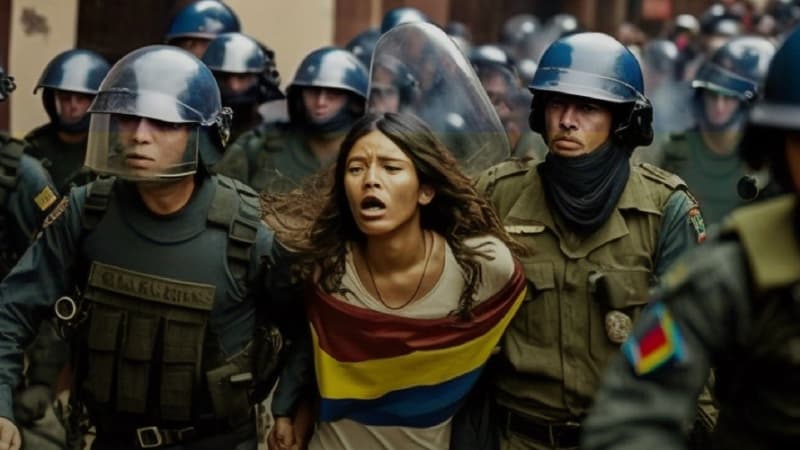The organization claims to have learned the lessons of the controversy. With Tech&Co, the French branch of Amnesty International announces that the human rights NGO as a whole will stop using images generated by artificial intelligence until further notice.
The controversy begins on April 29. On this day, Amnesty Norway publishes a series of tweets (since deleted) to denounce the police repression of protests in Colombia in 2021. They are accompanied by text describing the police violence and images that a quick glance identifies as AI-generated: a often distorted faces, garbled characters, and mentioning “artificial intelligence-produced illustrations” in small type.
Signals that will not have been enough to avoid controversy. Many netizens have denounced the use of fake images instead of the many existing photos, taken by real photojournalists sometimes at the risk of their lives. “It’s completely insensitive and disrespectful to the real victims,” he exclaimed. On twitter Jon Lam, an artist activist against generative image AI.
“This solution should not have been adopted”
“Very legitimate questions,” said Tech&Co Katia Roux, technology advocacy officer at Amnesty France. “For Amnesty France, it is clear that a mistake was made and that we must accept it,” she says.
Katia Roux explains that the publication was started by Amnesty’s partners in Latin America. “The members involved decided to use artificial images to protect the anonymity of the people who could have appeared in the photos,” explains the manager.
“But this solution should not have been adopted.” He mentions other possibilities, such as the use of authentic photos whose faces have been blurred.
AI Banned Until Further Notice
The outrage had been particularly strong among certain photojournalists, who cover such events despite great risks. “I have a friend who lost an eye [dans ces manifestations]“, exclaimed Juancho Torres, a photojournalist who works in Bogotá and quoted by the guardian.
It is for these reasons that “Amnesty International has decided to prohibit the use of AI-generated images in its communication until further notice”, underlines Katia Roux. The movement has also initiated an internationally coordinated reflection on its use of artificial intelligence systems.
The NGO, and in particular its French branch, are very active in discussions about the use of artificial intelligence, in particular around facial and biometric recognition. “Our use of these AIs must reflect our positions,” continues Katia Roux. “When we advocate on these issues, we must be consistent, exemplary and extremely vigilant.”
Little by little, some NGOs are starting to use generative AI in their communication. WWF’s UK branch, for example, used AI to imagine British landscapes for decades to come in the face of global warming. But at the moment, its use is not yet widespread.
Source: BFM TV


